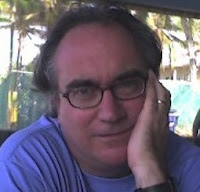The Tain Bo Cuailnge (the "Cattle Raid of Cooley") is the most famous of a collection of interrelated Old Irish writings known collectively as the "Ulster Cycle," tales of the Uliad, a Celtic people who give modern Ulster its name. These are, alongside the writings of Patrick, the earliest written literature of Irish, apart of course from various Rune-like inscriptions that predate Roman times. The Tain we have today is a compilation from sources from the 12th through the 15th centuries, although the characters, notably Queen Medb of Connacht, and the rough story can be found in poems from the 7th century that themselves refer to the stories as "old knowledge." They are certainly transcriptions of oral histories of great age. Tradition places the action around the time of Christ, although the influence of Christian scribes and scholars makes any reference to Christian connections suspect. Better to say that they are "Iron Age" in provenance, that period in Ireland lasting from around 800BC until the Roman Conquest, which penetrated to the east coast of Ireland in the 2nd century AD but never reached the west coast, which is often considered "Iron Age" until around 500AD.
These tales provide a lot of information about a warrior culture where wealth was measured in cattle and warriors, equipped with elaborate armor, weapons and training, battled each other under strict ritual terms of engagement that are observed by the noble and transgressed by the base. Various deities and spirits are involved in explanations of events. In all of these ways these documents are similar to the Hindu epics such as the Mahabharata, the subject of a recent post here.
However it is clear that these orally-transmitted stories were meant primarily as entertainment, vehicles for local history (there is a pervasive obsession with place-names which purportedly reflect battles and other violent and magical events), and inspiration for young men. Storytellers would try to outdo each other with ever-more fantastic details of battles and the superhuman powers of the men who fought them. The reigning aesthetic is that of the teenager's comic book. Reading the Tain is, I think, a necessary exercise for the serious student of Irish literature (you won't make much sense of Flann O'Brien's famous parody At Swim-Two-Birds without it), but not necessarily for the connoisseur of high literature.
It is a lot of fun, though. The bad guys are the wicked Queen Medb and her husband Ailill and their ally Fergus Mac Roich, exiled former ruler of the Ulstermen. Jealous that her husband has one of the most potent of bulls, Finnbennach, Medb resolves to raid the Ulstermen for Donn Cuailnge, the most potent bull of all. (Fertility is a male virtue in this society where alliances were cemented by marrying the children of powerful families, and noble daughters were often offered as bribes and rewards, as was sex with the queen: Medb offers "her thighs" when expedient, and her daughter Finnabair is offered to seemingly everyone of consequence.) The Ulstermen, meanwhile, are under a curse (the "mesca ulaid") such that they cannot fight for nine days (another allegory of infertility). Thus the defense of Ulster falls to the youth Cu Chulainn.
Cu Chulainn is the legendary hero of Irish literature. He is the Superman of this comic book. He is stabbed and slashed and beaten and bloodied, but he is never defeated. He takes advantage of noble rules of engagement to insist that Medb's army fights him one by one, allowing for the narative of a series of battles. The ultimate contest is with his beloved friend and step-brother Fer Daid, who he kills after three days of fighting during which they hack off pieces of each other "the size of baby's heads." As in the Indian epics, the noble warriors here fight from duty, not from rage.
Such are the bare bones of the story. The reason for posting about it is that I've just read Ciaran Carson's 2007 translation, the first since Thomas Kinsella's breakthrough translation of 1969. Kinsella opened up a whole world of scholarship by making the Tain accessible to a public readership for the first time. Carson has achieved something different: he has taken this text, a patchwork from ancient sources in the first place, with centuries of accretions, in various languages and dialects, some parts in verse, others in vernacular, others in elevated language, and rendered it in beautiful, informal modern English. It is a work of technical brilliance and fearless panache and I thoroughly enjoyed it.
Subscribe to:
Post Comments (Atom)


1 comment:
You characterise the Táin as being like a comic book - you might, even as a serious reader, be interested in my comics adaptation, "The Cattle Raid of Cooley", serialised weekly on my website, http://paddybrown.co.uk .
I've done a little violence to the text to give it a more satisfactory narrative shape, but I think it remains true to the spirit of the original and particularly to the characters. I've also tried to give it a convincing Iron Age setting, and I'm from Northern Ireland so the landscape is very familiar to me.
Anyway, if you do pay it a visit, let me know what you think.
Post a Comment